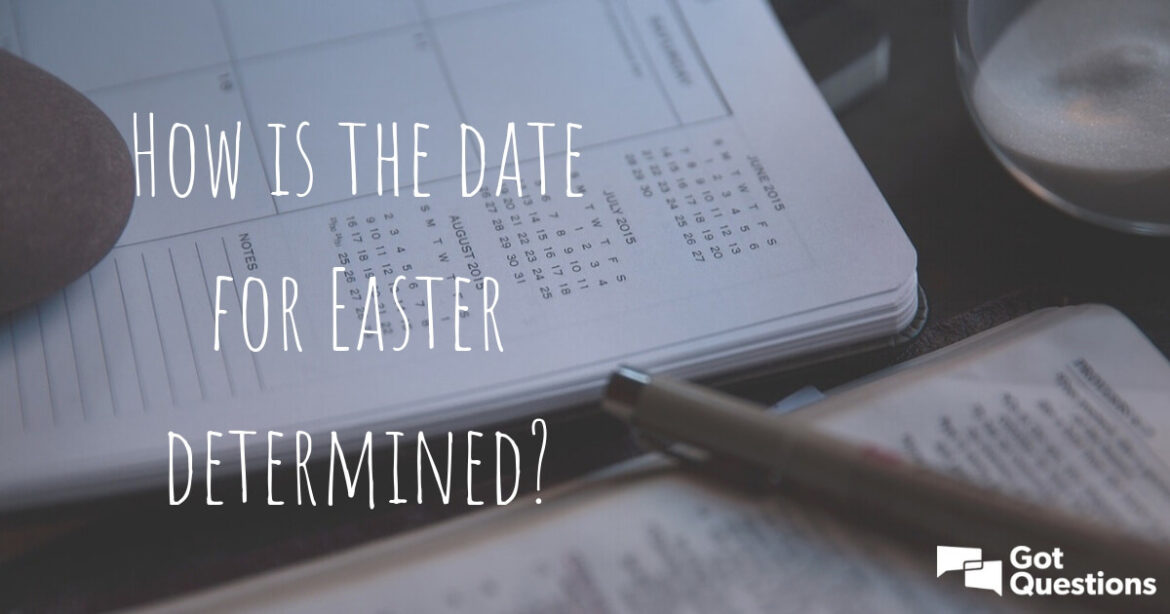Every year, Christians around the world eagerly anticipate the arrival of Easter, a celebration of the resurrection of Jesus Christ. Yet, as one prepares to observe this significant occasion, a fascinating question often arises: How is the date of Easter determined? This inquiry merges celestial mechanics with theological reflection, offering a rich tapestry of history, tradition, and astronomical phenomena that underlies this pivotal Christian feast.
The date of Easter fluctuates each year, creating a sense of variability that can be both exciting and perplexing. The Church adheres to a system governed by the lunar calendar rather than the solar calendar used in the Gregorian system, leading to a delightful conundrum that has puzzled theologians and astronomers alike throughout the centuries. While many holidays are anchored to fixed dates, Easter dances to the rhythm of celestial bodies, making the quest for its date a confluence of fact and faith.
To understand the methodology behind the date of Easter, one must first examine the Council of Nicaea, convened in AD 325. One of the Council’s primary objectives was to establish a unified Christian doctrine, including the timing of Easter. It was determined that Easter would be celebrated on the first Sunday following the first full moon after the vernal equinox. This decision embodies a remarkable intertwining of astronomical phenomena with the theological significance of Christ’s resurrection.
At its core, the formula for determining Easter is both simple and intricate. The Church has chosen to calculate Easter in relation to the Paschal Full Moon. This is the first full moon that occurs on or after the vernal equinox, which is fixed on March 21 for the sake of consistency, despite the actual date of the equinox varying slightly from year to year. By adhering to these parameters, one can deduce that Easter falls anywhere from March 22 to April 25. It introduces an exhilarating sense of uncertainty each year, much like the shifting sands of time.
To further complicate matters, this method diverges from the Jewish calendar, which originally dictated the timing of Passover—a festival intrinsically linked to Easter. Since the Last Supper and Christ’s crucifixion took place just after Passover, there is a deep-seated theological connection between the two observances. The Jewish calendar is lunisolar, meaning its months are based on lunar cycles, but its years are adjusted to correlate with the solar year. This divergence has led to an interesting dynamic in which the timing of Easter does not consistently align with Passover, prompting reflection on the relationship between these two pivotal events in the Christian narrative.
While the Church’s established formula provides a systematic approach to determining Easter, it brings with it an inherent challenge to comprehend the underlying significance of this temporal conundrum. The fact that Easter can be celebrated as early as March 22 and as late as April 25 raises the question of how Christians can find unity in their celebrations while navigating this varied temporal landscape. Does it matter if one congregation celebrates Easter a few weeks earlier than another? This playful question opens a dialogue about the essence of Christian unity, transcending mere calendrical observance.
Another layer of complexity arises when considering the various Christian denominations and their respective practices. While Western Christianity largely adopts the Gregorian calendar’s method to determine Easter, many Eastern Orthodox churches still use the Julian calendar. This results in different Easter dates, prompting both theological reflection and dialog among believers. The diverging dates serve as a reminder that Christianity’s manifold expressions are a sign of its profound mystery rather than a cause for division.
Amidst these complexities lies an awe-inspiring synthesis of astronomy and theology. The celestial bodies that govern the timing of Easter are not merely abstract concepts; they serve as continual reminders of the divine order embedded within creation. The shifting phases of the moon, the cyclical nature of the seasons, and the rhythm of the vernal equinox reflect God’s artistry in the cosmos, echoing the resurrection narrative’s significance in the Christian faith.
This intersection of celestial phenomena and spiritual observance invites Christians to ponder their place within the grand tapestry of creation. Easter’s date serves as an opportunity for reflection, urging believers to explore the interplay between the temporal and the eternal. It calls into question how one conceives of time itself and how it relates to God’s plan for humanity. Are believers merely slaves to a calendar, or do they engage in a sacred dance that intertwines their lives with the cosmos?
Ultimately, the determination of Easter’s date is a rich confluence of agriculture, astronomy, and abounding theological meaning. As Christians prepare their hearts for this special time, they are reminded that the cosmos is proclaiming the glory of God. Each calculated date brings them closer to understanding the profound truth of resurrection that the day embodies. It serves both to mark the rhythm of the universe and to allow believers to engage with the divine story in a manner that is at once structured and exuberantly spontaneous.
As celebrations approach, one cannot help but marvel at the intricate beauty of God’s created order, which establishes a rhythm that the Church has chosen to embrace. Whether one finds joy in the early springtime blooms or the budding theological discussions that arise, the dynamic nature of Easter’s date offers a splendid reminder: while the dates may change, the message remains steadfast—Christ is risen, indeed.



